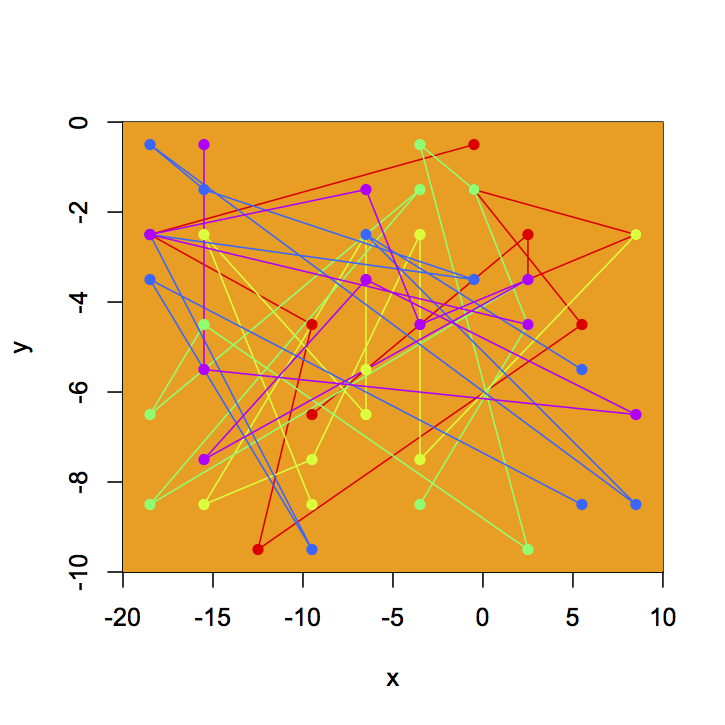The clue is building the SpatialLines object later, once you have a list of Lines objects. The ID MUST be unique, otherwise all your Lines objects will have the same ID, and SpatialLines will throw an error.
I prepared this example code to illustrate:
library(sp)
library(raster) # need a raster to generate fake data
library(dismo) # I'm using the "randomPoints" function from dismo
# first we need a canvas
# we can start with an arbitrary extent
ext <- extent(-20,10,-10,0)
r <- raster(ext) # this is our raster object
r[] <- 1 # let's fill it up with 1's
indiv <- LETTERS[1:5] # let's say we have 5 individuals with data
df <- data.frame()
# we are generating 10 random points per "individual"
for (i in 1:5)
df <- rbind(df,randomPoints(r, 10))
# you will get a warning about the projection, ignore that.
# with this we can generate a SpatialPointsDataFrame
spdf <- SpatialPointsDataFrame(
coords=as.matrix(df),
data=data.frame(ind=sort(rep(indiv,10))))
# now we loop for each individual
# and store "Lines" objects in a list
trajectories <- list()
for (i in 1:length(indiv))
trajectories[[i]] <- Lines(list(Line(subset(spdf, ind == indiv[i]))),
ID=paste(i))
# pay close attention on how the Lines structure must be structured:
# Lines(list(Line(spdf)), ID="unique string")
# then we simply transform our trajectories list to SpatialLines
splo <- SpatialLines(trajectories)
You can the visualize the data like this:
image(r)
plot(splo, add=T, col=rainbow(5))
plot(spdf, add=T, pch=16, col=rainbow(5)[ spdf$ind ])

